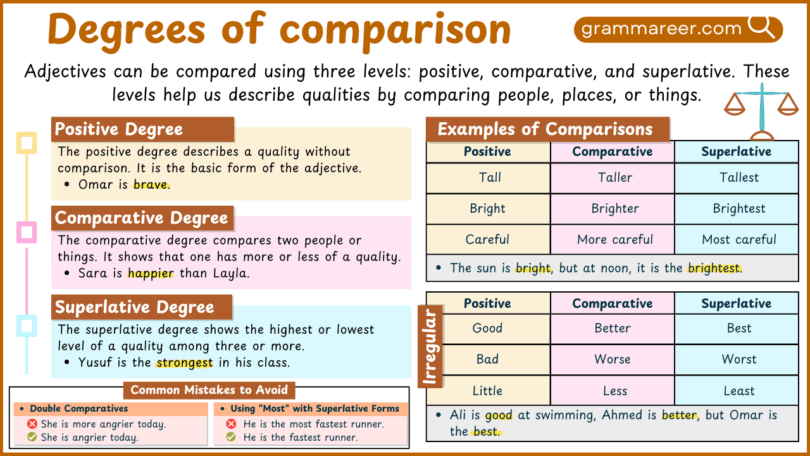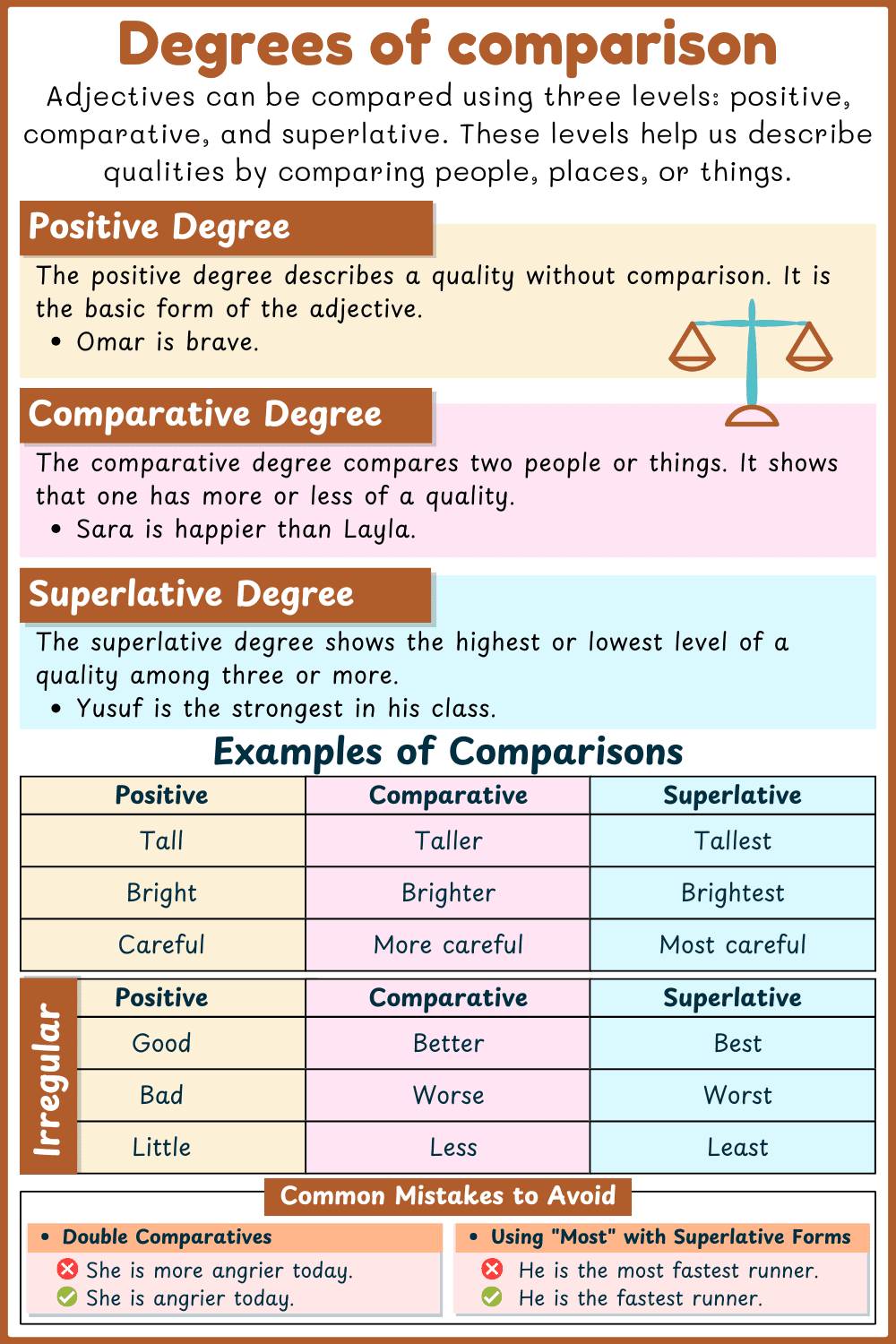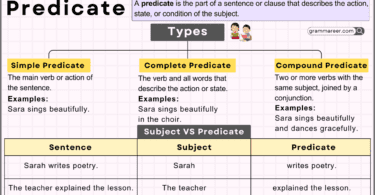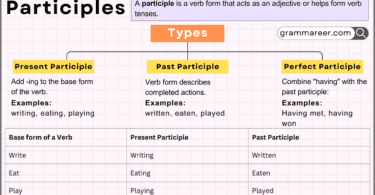Adjectives are words that help us describe or give more information about nouns. One of the special things about adjectives is that they can show comparison. We use different degrees of comparison to compare qualities of people, places, or things. In this post, we will learn about the three degrees of comparison, how to use them, and some exceptions you should know.
Table of Contents
What Are the Degrees of Comparison?
In English, we compare adjectives using three levels: positive, comparative, and superlative. These levels allow us to describe qualities from simply stating them to making comparisons between two or more things.
Positive Degree
The positive degree describes a quality in its basic form. It simply tells us something about one person or thing without making any comparison.
Example:
- Omar is a brave boy.
Here, “brave” is used to describe Omar, but we are not comparing him to anyone else.
Comparative Degree
The comparative degree is used to compare two people or things. It shows which one has more or less of a certain quality. For one-syllable adjectives, we usually add -er; for longer adjectives, we use more or less before the word.
Example:
- Sara is happier than Layla.
In this example, we compare Sara and Layla, showing that Sara has a higher level of happiness.
Superlative Degree
The superlative degree is used when comparing three or more people or things. It shows which one has the highest or lowest level of a certain quality. For shorter adjectives, we add -est; for longer adjectives, we use most or least.
Example:
- Yusuf is the strongest in his class.
In this sentence, Yusuf is compared to everyone else in his class, and he has the highest level of the quality.
Examples of Adjective Comparisons
To understand these degrees better, let’s look at a few more examples of adjectives in all three degrees of comparison:
| Positive Degree | Comparative Degree | Superlative Degree |
|---|---|---|
| Tall | Taller | Tallest |
| Bright | Brighter | Brightest |
| Careful | More careful | Most careful |
| Comfortable | Less comfortable | Least comfortable |
Example:
- The sky is bright, but the sun is brighter. However, at noon, the sun is the brightest of all.
With shorter adjectives like tall and bright, we add -er for comparative and -est for superlative. With longer adjectives like careful or comfortable, we use more/most or less/least.
Irregular Adjectives
Not all adjectives follow the same rules when forming their comparative and superlative degrees. Some have irregular forms that you need to remember. Here are a few common examples:
| Positive Degree | Comparative Degree | Superlative Degree |
| Good | Better | Best |
| Bad | Worse | Worst |
| Little | Less | Least |
Example:
- Ali is a good swimmer. Ahmed is better, but Omar is the best.
These irregular forms do not follow the usual pattern and must be memorized.
How to Use Comparison in Sentences
Here are some examples of how we can use the degrees of comparison in sentences. Pay close attention to how the adjectives change.
Examples:
- ✅ Layla’s dress is more beautiful than Fatima’s dress.
- ✅ Ahmed is the most hardworking student in his grade.
- ❌ Hassan is more stronger than Bilal.
In the incorrect example above, the phrase more stronger is wrong because stronger already indicates comparison. Using more with it is unnecessary and incorrect.
Common Mistakes to Avoid
When using degrees of comparison, there are some common mistakes learners make. Here are a few to watch out for:
Using Double Comparatives or Superlatives
- ❌ She is more angrier today.
- ✅ She is angrier today.
Adding “Most” to Adjectives That Already Have Superlative Forms
- ❌ He is the most fastest runner.
- ✅ He is the fastest runner.
Confusing “Further” and “Farther”
Both further and farther can refer to distance, but further can also mean “more” in a non-physical sense.
Examples:
- ✅ He ran farther than anyone else in the race.
- ✅ We need to explore this topic further.
Summary
The degrees of comparison help us show different levels of qualities between people, places, or things. The positive degree describes without comparison, the comparative degree shows a comparison between two, and the superlative degree identifies the highest or lowest level among three or more. Be mindful of irregular adjectives and avoid common mistakes, like using double comparatives or incorrect forms.
By understanding and practicing these degrees, you can improve your descriptive language and make your sentences clearer and more effective.
Read More






